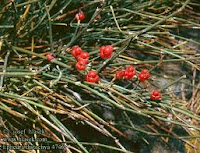Cornflowers get their name in English because they used to be seen frequently, along with red poppies in fields of corn (wheat). When farmers began using chemical insecticides and herbicides on their crops there were fewer cornflowers to be seen. The name Centaurea comes for Centaur as the centaur Chiron was a skilled herbalist according to Greek myth, and he used cornflowers to counteract the effect of arrows tipped with poison from the Hydra, the many-headed monster believed to guard Hades or the Underworld. Cyanus means blue or azure, the colour of cornflowers. They are native to Europe and parts of temperate Europe and are naturalized in North America.
Centaurea montana is a perennial while cyanus is an annual but they are both self-seeding, so if you have them in your garden you may need to clear some as they can grow prolifically.
Both cornflowers can be used as food colouring and have been used through the ages to produce blue dye. They are pretty garnishes for salads and desserts too.
Cornflowers are also known by the names bluebottle, blue bonnet, bluet, and Bachelor’s Buttons. According to folk lore bachelors who were in love, would wear a cornflower in their lapel button holes and if it faded quickly this meant that the object of their desire did not love them. If the flower lasted, the love was returned. Another superstition was that if cornflowers were brought into the house, the bread would go mouldy.
I was told as a child not to pick the wild cornflowers (C. cyanus) as they would not last for long, but C. montana was OK to pick as that grew in my grandmother’s garden, but whether by accident or design, I don’t know. They lasted quite a few days as I remember.
 Many artists have tried to capture the beauty of the cornflower on canvas, including Vincent Van Gogh, in his Wheat Field with Cornflowers.
Many artists have tried to capture the beauty of the cornflower on canvas, including Vincent Van Gogh, in his Wheat Field with Cornflowers. Cornflowers of both types can be used to the same effects, and the tisane is good for the eyes and the skin, as it will remove irritation. As a douche it can help clear up candida, and an infusion of equal parts of lime flowers and cornflowers will help to get rid of dark circles under the eyes. The powdered flowers are mixed into a paste to help with bruising and cornflowers are frequently to be found in skin care products, shampoos and ointments.
 |
| C. montana |
As the name would suggest, it is related to the herb centaury, and has been mentioned in several works of literature including “Of Human Bondage” by Somerset Maugham chapter CXXII:-.
“His imagination was busy with Sally. It would be pleasant to take her away from that London in which she seemed an unusual figure, like a cornflower in a shop among orchids and azaleas; he had learned in the Kentish hop-field that she did not belong to the town; and he was sure that she would blossom under the soft skies of Dorset to a rarer beauty.”
Wilkie Collins writing earlier than Maugham mentions it in “Man and Wife” chapter 22.
"She wore a straw hat, with corn-flowers in it, and a white veil. Corn-flowers at one side uncle, which is less common than cornflowers in front.”
Cornflowers look a little like Nigella although they are a deeper blue. They have been an inspiration for artists and have been included in popular English literature, but sadly are not seen as often in the wild as they once were.
CORNFLOWER TISANE
Ingredients
1½ - 2 ozs fresh cornflowers
1 pint boiling water
Method
Pour boiling water over the flower heads and leave to steep for 20 mins before straining and drinking, or using as a douche, skin wash etc.
This has Taste and is a Treat(ment).



















































